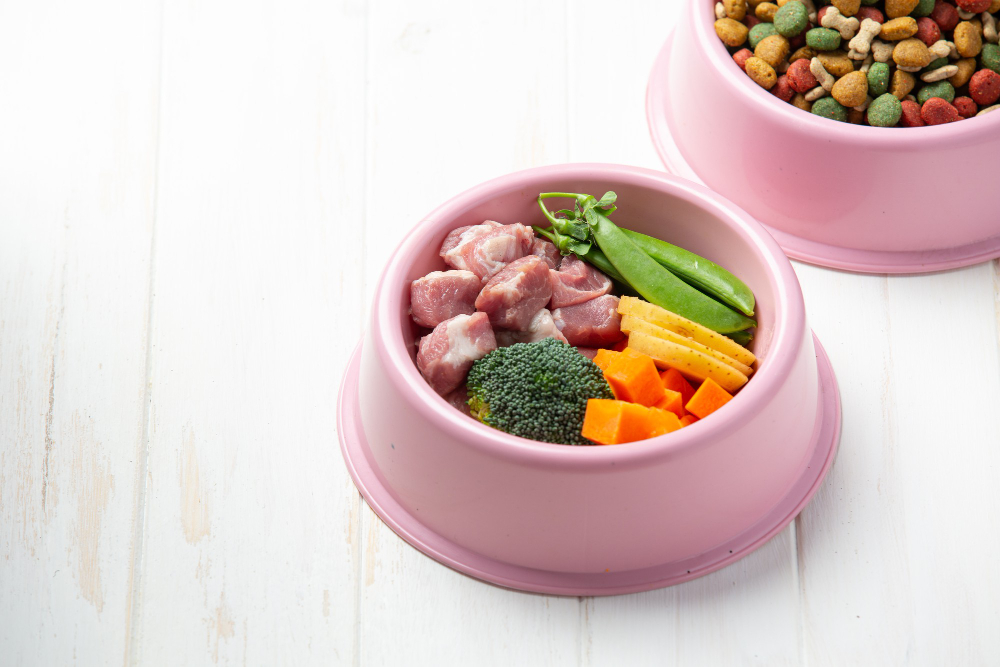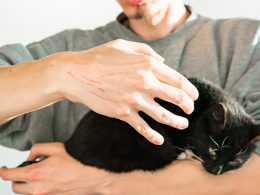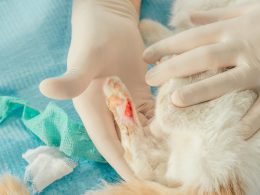What can I give my cat when run out of cat food? What’s the affordable food that you can feed your cat? Are raw diets beneficial for cats? A raw diet necessitates uncooked animal products instead of conventional dried or canned foods. It might be challenging to choose cat food, especially when we must worry about commercial pet food recalls. When pet owners struggle to answer the question “how can I feed my cat cheaply?” they still have to contend with better options for a cat’s diet.
Some owners opt to create homemade meals for their cats so that they can control the ingredients. These homemade meals may be cooked or uncooked. However, numerous owners choose raw food that resembles a cat’s natural diet in the wild.
A raw diet consists of feeding uncooked animal items to cats. This comprises muscle, organ, and bone meat. This diet is also referred to as the “BARF” or “biologically suitable raw food” diet.
The optimal raw diet for cats is produced according to a meticulously crafted formula. Many cat owners opt to create these meals at home, but they are also available in commercial versions. If you want your cat to switch to a raw diet, it should be one that a veterinary nutritionist has deemed complete and balanced. Cats with an unbalanced diet are susceptible to several health problems.
What Raw Food Can I Feed My Cat?
Raw food for cats typically includes ground bone, organ meats, trimmings, and more.
Feeding cats uncooked meals is controversial. Indeed, the wild progenitors of domestic cats ate raw foods, but does that suggest that our cats should also? Raw cat food consists of unprocessed, uncooked ingredients.
Cats are obligate carnivores with specific dietary requirements that can be satisfied by a diet consisting primarily of animal tissue. This is accomplished by placing raw meat, fish, and organs at the front of raw cat food ingredient lists. Bone meal is commonly used as a source of calcium and phosphorus. Diets are supplemented with vitamin and mineral supplements and other items to avoid nutritional deficits.
Cats require a high protein intake because, unlike most other animals, they utilize protein rather than carbs for energy. In addition, certain amino acids, most notably taurine and arachidonic acid, vitamin A, vitamin D, and other B vitamins, must also be present in enough quantities.
Raw cat meals are available in several types. Some cat owners create raw meals at home for their feline companions. Others opt for commercially produced raw cat food, which is often available as raw frozen or raw freeze-dried recipes. The most convenient way to feed your cat a raw food diet is to purchase fully prepared and frozen (or freeze-dried) meals.
The proportions of components in these meals ensure that your cat receives a balanced diet and the nutrients he needs for optimum health.
By adopting this strategy, there is no need to worry about whether or not he is receiving a nourishing meal and the nutrients he needs. In addition, there is a vast selection of these ready-to-eat meals to pick from. These dishes’ primary sources of protein are turkey, lamb, cattle, chicken, rabbit, fish, bison, and other exotic meats.
Feeding your cat frozen raw meat is not only quick, simple, and straightforward, but it is also cost-effective.
Since the grinding and mixing have already been completed, nothing is left to do but defrost, portion, and serve.
Is Raw Frozen Food Good for Cats?
While raw frozen food can be safe for cats, other factors are at play here. Are you contemplating transitioning your cat to frozen raw cat food? Perhaps you want your cat to consume a more similar diet to what they would eat in the wild. The raw food diet is also known as the biologically adapted raw food (BARF) diet. In the wild, cats consume prey high in protein, moderate in fat and low in carbs. Raw food advocates think that because this is a more natural diet for cats, it is also healthier.
One of the most common mistakes people make when feeding their pets a raw diet is providing them with fresh meat and bones. They may not take protein, fat, and nutritional composition into account. Before feeding your raw cat meat, it is essential to get her examined. Consult with your veterinarian for possible recipes. A diet deficient in critical nutrients might result in significant health issues for your cat. Your veterinarian will likely offer vitamins to prevent this from occurring.
Is Dehydrated Food Good for Cats?
There has been a spike in cat and dog owners contemplating raw, “human-grade,” minimal ingredient, or freeze-dried pet food. Unfortunately, the market share of freeze-dried cat food is substantially smaller than that of kibble or canned food, although the category is expanding.
Because there are several health hazards connected with dietary nutritional deficiencies in cats, many of which are permanent or incurable, it is recommended to consult your veterinarian or a board-certified veterinary nutritionist when selecting an appropriate diet for your cat. Many factors are at play, including your cat’s age, health conditions, and medicines.
Freeze-drying is when a product is frozen and placed in a vacuum, causing its water content to sublimate (go from ice to vapor). The food item is then packaged in an airtight container. This eliminates all moisture from the food, making it more stable at room temperature for longer durations than items that have not been freeze-dried.
Raw cat food is freeze-dried food that has not been cooked or pasteurized. It may be offered as a meal or a treat on its own or used to coat kibble or combined with kibble.
There are some significant distinctions between raw food and freeze-dried cat food:
- Moisture is extracted from raw foods (freeze-drying process) to make shelf-stable freeze-dried meals.
- Freeze-dried foods are commercially available, although unprocessed raw foods are often prepared by pet owners or purchased from local pet stores or butcher shops. This indicates that they have not been altered to reduce the bacterial or parasite load that can be an issue when feeding raw. – Additionally, unprocessed raw foods may not be controlled or nutritionally balanced unless the pet owner works with a board-certified veterinary nutritionist to ensure their pet’s diet is nutritionally adequate.














